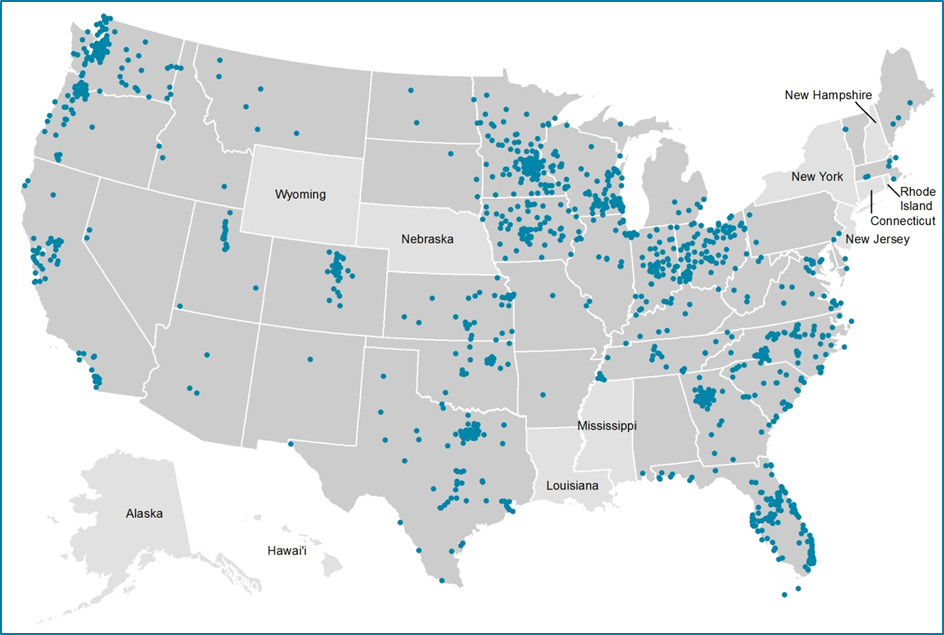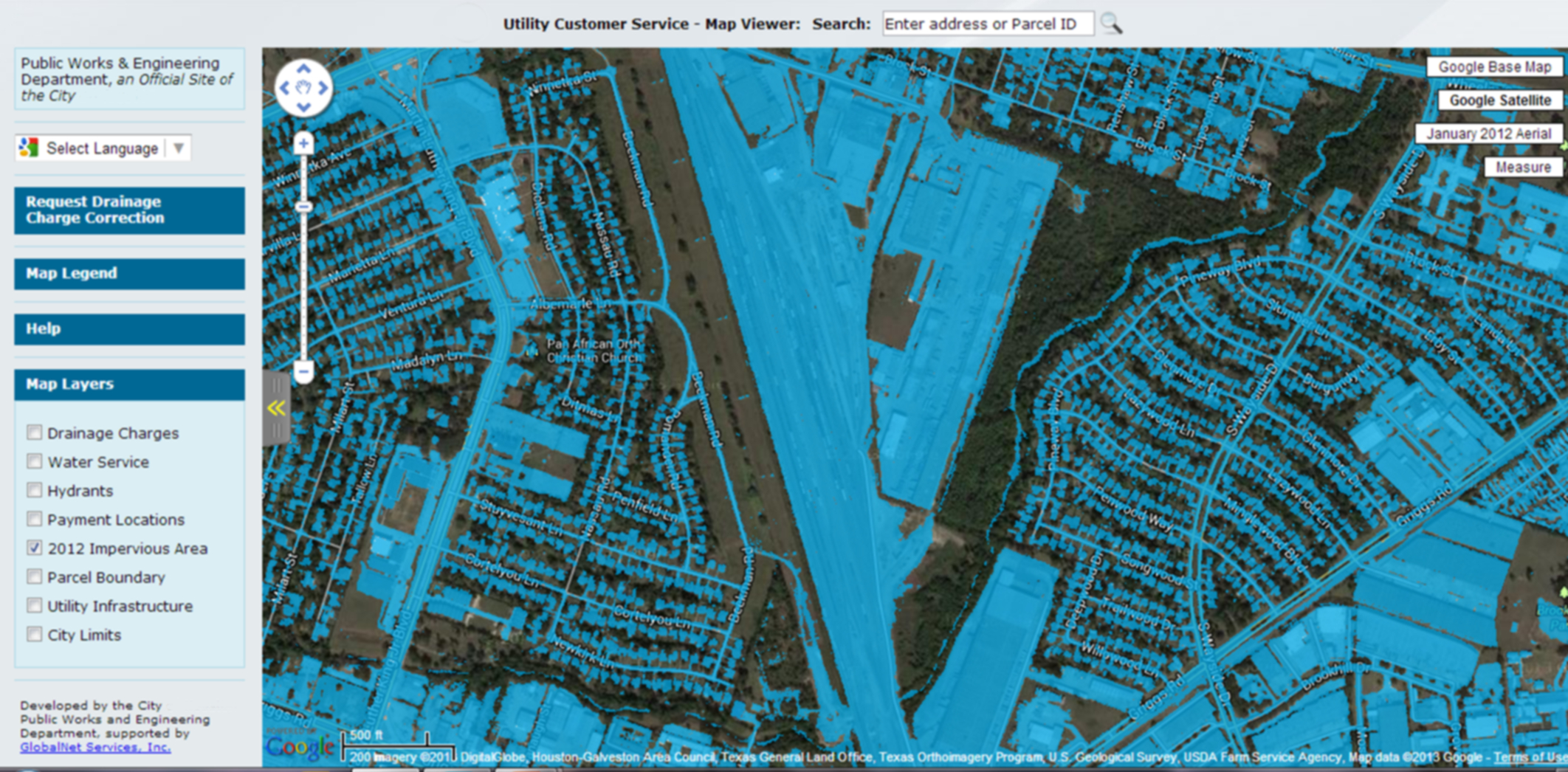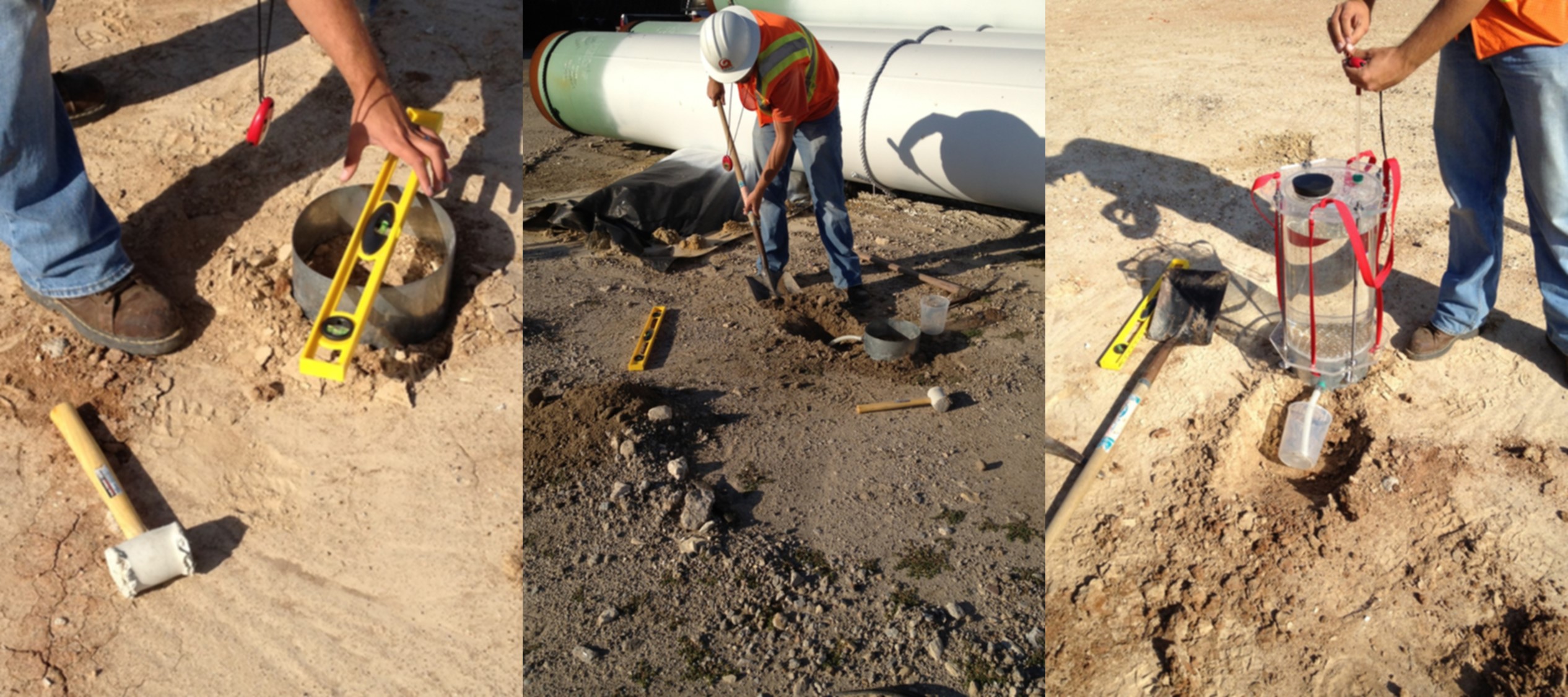Avoiding the pitfalls in setting stormwater utility fees while getting stakeholder support
Jennifer Berthiaume, Edward Quiroz, and Jennifer Ivey
Utilities and customers often clash over the implementation of stormwater utility fees. From the utility’s perspective, it is important to cover the bases legally and defensibly without an overwhelming amount of detail or potential loopholes. From the customer’s standpoint, a stormwater fee may be instituted with little or no notice, leaving the user feeling unsure about the methodology and “fairness” of the fee.
More than 1400 municipalities and utilities across the U.S. have implemented stormwater utility fees, according to a 2013 study (See Figure 1). As additional utilities experience the need for revenue to maintain and operate their stormwater infrastructure, it is imperative to understand the lessons learned from others to avoid the same pitfalls. By avoiding these difficulties, stormwater utility fee programs can be implemented successfully with stakeholder support.

Figure 1. Location of stormwater utility fee programs as of 2013. Western Kentucky University Stormwater Utility Survey 2013, C. Warren Campbell, Western Kentucky University, Bowling Green, Ky.
.
Goals of stormwater utility fees and common pitfalls
The primary goal for any stormwater utility is the development of an equitable fee system for all users, one that will result in enough revenue to effectively manage and operate the infrastructure associated with the stormwater system. Successful implementation of such a program centers around activities in four core areas:
- Program management. Identify problems, needs, and goals of the stormwater utility fee and produce a cost-of-service analysis.
- Data and methodology. Use the best available data and a defensible methodology to produce a master account file, which lists all properties and their associated utility fee amounts.
- Finance and legal. Produce a rate-structure analysis and develop the fee ordinance.
- Public outreach. Notify customers via public hearings and city council/utility board meetings.
Each of these core areas contains potential stumbling blocks that can make a stormwater utility implementation difficult or contentious. But stormwater utility programs across the U.S. regularly address various issues that arise from hasty implementations, vague ordinance language, and lack of public outreach. Remedies and preventative steps also exist.
Program management: Haste makes waste
Often, under pressure to implement stormwater fees as quickly as possible and raise revenue, utilities hasten their timeline. This affects several analyses — from cost-of-service, to financial rates, to data and methodology. The public outreach activities also may be hurried to avoid too many questions about the implementation, leading to a bad taste in the mouth of customers once they receive their first fee.
Rushed analysis leads to a bigger problem: inaccurate billing, which can equate to lost revenue. Utilities may adjust rates and overcharge customers to make up for the revenue that they cannot find; or worse, they do not recognize that there is lost revenue.
Data and methodology: Not all data are created equal
Methods of calculation and rates vary greatly between cities — either as a flat fee per water meter or parcel account, or based on equivalent resident units (ERU) as an indication of impervious cover. A geographic information system (GIS) provides utilities with the tools needed to perform ERU analysis, but even then, methodologies can differ based on available data.
Utilities with planimetric data (items digitized from aerial photography, such as building footprints, driveways, sidewalks, and streets that has been orthorectified, or adjusted for topographic relief, lens distortion, or camera tilt) use this information as a highly accurate way of targeting individual properties with impervious cover. With the option of planimetric data, utilities also can choose to specify the material type if details are included in the ordinance, leading to more accurate billing for impervious concrete or asphalt surfaces versus pervious gravel. It is critical to update the planimetric data each year in preparation for revisions and adjustments to the stormwater utility fee. Additionally, a small amount of fieldwork to verify the initial aerial interpretation can help build a defensible and repeatable methodology.
Utilities without planimetric data may use satellite imagery interpretation in which classifications are made to distinguish pixel or cell colors as “pervious” or “impervious.” Infrared imagery bands may be used due to the reflectivity of organics; vegetation appears in shades of red, making it easy for the analyst to assume that all other cells must be impervious. The level of error introduced into this methodology depends on the accuracy and timeliness of the imagery — with the understanding that cloud cover and tree canopies can greatly interfere with analysis. Additionally, the assumption that cells that are displayed as nonvegetative are equivalent to impervious cover is a dangerous one.
Finance and legal: Defining impervious surfaces
For stormwater utility fees based on impervious surfaces, it is critical to define “impervious” and “pervious” surfaces with clarity.
Finance and legal: Billing errors lead to appeals
Stormwater utility fees typically are presented either on annual property tax bills or as part of monthly utility fees. Incorrect items may be included in the fee that otherwise would go unnoticed in a lump sum payment. If they do not receive a report with the specific fee calculation, customers may be overcharged inadvertently for parcels and impervious areas that are owned by others and should be excluded from analysis (for example, public roadways, street crossings, overpasses).
Depending on the methodology used, there is also the danger of misidentifying areas that are in fact pervious. This may include misclassification of “dark forest” patches as impervious roadway surfaces or cloud cover interference. On the flip side, infrared imagery for vegetation analysis may overestimate the amount of pervious/vegetation on a property if the tree canopy overshadows impervious surfaces (for example, tree cover over a house, structure, driveway, or parking lot).
Utilities should make an effort to distinguish and make allowances between impervious areas that are benefitted or nonbenefitted by utility infrastructure. Stormwater runoff that is collected and maintained entirely on a customer’s parcel may be considered “nonbenefitted” because it does not enter the utilities’ structures and conveyances. In these cases, customers may feel unfairly charged for stormwater activities in which they do not participate.
Public outreach: Doing the bare minimum
Successful stormwater utility fee implementations often center around productive meetings with stakeholders. Residential, commercial, and industrial customers should be able to provide input and review the rate analysis prior to implementation. Too often, utilities will schedule the bare minimum of public hearings to fulfil the legal criteria, thus avoiding valuable interaction with their customers. It is important to recognize that not all customer feedback during implementation will be negative; constructive criticism may cause a shift in ordinance development.
Case study: An industrial stakeholder’s perspective
An industrial customer recently partnered with ARCADIS (Highlands Ranch, Colo.) as its consultant to review and analyze a number of stormwater utility fees in Texas. There were numerous concerns about the account, including assessment of charges, gross overestimation of ERUs, billing errors, and technical discrepancies between impervious definitions.
The initial assessment of charges for industrial stakeholders can be a shock — in one customer’s case, the city assessed more than 20 million ft2 (1.86 million m2) of impervious surface across the parcels, resulting in an annual fee greater than $1 million. This was primarily due to the methodology that the city employed — an infrared imagery interpretation of pervious (vegetation) versus impervious (nonvegetation) surfaces (see Figure 2).

Figure 2. Example of infrared satellite imagery with planimetric data overlay that can lead to mistakenly classifying areas as impervious
Due to the magnitude and scope of the stormwater fee program, the city in this case study did not include any fieldwork verification in its methodology. This oversight led the customer and the consultant to investigate a number of items, including infiltration testing throughout rail yards and a literature review of runoff coefficients. Additionally, the consultant was able to make the case that many of the industrial customer’s large parcels discharged into the local flood control district’s infrastructure or was retained onsite, leading to a discussion on benefitted versus nonbenefitted parcels. Finally, through desktop GIS analysis and aerial imagery review, a number of parcels and impervious areas (public roadways, street crossings, overpasses) were identified that should have been excluded from the assessed charges.

Infiltration tests were conducted at various locations throughout an industrial stakeholder’s property. The tests indicated that areas of the property, while not vegetated, still qualified as pervious based on the city’s design standards. ARCADIS 2011
.
For the utility: How to avoid pitfalls
As discussed, utilities encounter common pitfalls while designing, implementing, or renewing a stormwater utility fee program. The lessons learned from utilities across the country can help others avoid the same mistakes, and better yet, recover finances more consistently and accurately.
Program management. No one likes a rush job — it leaves all the stakeholders with a bad feeling and suspicious of the assessed fees. To make the most equitable and fair system, utilities should strive for transparency and stakeholder support throughout the design and implementation process.
Data and methodology. Utilities should prepare for implementation by conducting a thorough review of data and tailor the methodology to fit. A defensible methodology and consistently updated data will allow a utility to review and adjust fees annually with ease. If using GIS analysis for fee calculations, either planimetric or satellite imagery analysis, utilities should be prepared to provide map documentation for customers to review upon demand.
Finance and legal. Utilities should define and follow their own stormwater discharge design documents related to stormwater coefficients to avoid stakeholder confusion. Clear definitions will allow stakeholders and utility staff to communicate with ease. There is a delicate balance between overly restrictive language and overly generic language — one can back the utility into a corner, while the other leaves room for potential appeals.
In addition, before a stormwater utility fee implementation, utilities should make the effort to understand and recognize their own stormwater discharge locations, including the possibility of appeals from nonbenefitted property owners. Utilities also should understand and maintain infiltration rates and runoff coefficients for their area to demonstrate field verification. Finally, utilities should be aware of the erroneous billing potential of public rights of way and take care to exclude those areas from analysis.
Public outreach. Public outreach and stakeholder involvement is a critical step to a successful stormwater utility fee implementation. Beyond the required public hearings at city council or utility board meetings, utilities should take an active role to inform the public of the possibilities, changes, and options.
For the industrial customer: How to avoid pitfalls
Stormwater utility fee pitfalls are not only the domain of the utility. It is critical for customers and industrial stakeholders to assess the potential fee implications prior to receiving their first bill. By taking a proactive approach, multistate or nationwide industrial customers can be prepared as utilities implement stormwater fee programs that vary by data, methodology, and ordinance. Four key areas will assist industrial users in avoiding stormwater fee issues on the customer side.
Parcel awareness. Know what is owned versus what the assessor (utility) thinks is owned. Reconcile land holdings with tax assessor parcels. While this may be a laborious process, especially if land holdings cross multiple counties and states, it is worth the upfront investment.
Impervious surface inventory. Conduct regular surveys of facilities to understand the amount of impervious surface that can be assessed by stormwater fees. Delineate areas that are benefitted by utility infrastructure and those that treat stormwater onsite or discharge to other systems.
Stay informed of stormwater fee programs. Pay attention to utilities that are speculating, designing, or implementing a stormwater utility fee. Get involved and provide feedback so the utility can take industrial facility information into consideration while designing and refining ordinances. Encourage the utility to perform field surveys to understand the real-world environment beyond the desktop inventory.
Respect the differences. Especially important for industrial stakeholders with multi-jurisdictional properties, is that they acknowledge an appeal or defense of one property may not work in another.
Jennifer Berthiaume is a GIS analyst in the Dallas office; Edward Quiroz is a certified project manager in the Houston, Texas, office; and Jennifer Ivey is a resource manager at the Dallas office of ARCADIS (Highlands Ranch, Colo.).




